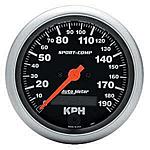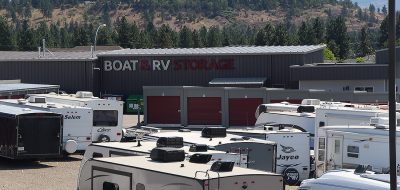 This week’s Lug_Nut view. Many years ago, in the early 1970’s Canada used standard measurements for things like weight, area, distance, temperature, etc. This, with the exception of the imperial gallon and similar liquid measures, matched that of the U.S. Trade between both countries could be done using the same scale and measure. Life was good.
This week’s Lug_Nut view. Many years ago, in the early 1970’s Canada used standard measurements for things like weight, area, distance, temperature, etc. This, with the exception of the imperial gallon and similar liquid measures, matched that of the U.S. Trade between both countries could be done using the same scale and measure. Life was good.
The Canadian government, led by Pierre Trudeau, started the transition to the metric system. This took over 13 years to fully implement. Living in Canada, I can tell you it was tough. Business’s had to convert to these new measures in every aspect. New equipment, new packaging, new advertising brochures, billing changes, and shipping changes, were just some of the challenges. Consumers were equally confused. Now meat in the grocery store was priced by the kilogram and more expensive product by the 100 grams. There was absolutely no way to gauge whether you were getting a fair price or being ripped off, short of having a calculator and an accountant with you. Oh, and what’s up with badges on cars saying “3.2” etc.? Is that a software wersion?
Well, here we are 40 years later, Canada pretty well fully metric and the U.S. using the standard North American measure. My only question is “What was Canada thinking?” U.S., our best friends and neighbors, which we share thousands of miles of border, were using the same as we did. Why did Canada change it? What were they thinking?
Personally, I would rather buy my fuel by the gallon, the American gallon, not the milk bottle sized liter. Then I can drive miles, not European kilometers. If I want to do that I will go to Switzerland. If it gets cold, I want to monitor it in Fahrenheit degrees not Celsius, centigrade, or any other nonsense. I want to live in a house that is X square feet, not square meters. I would probably have to buy metric furniture for that.
But, because of the U.S. influence and trade, Canada is really a “Pig-Metric” society. TV’s are still sold by the inch, as is automobile rims and much more. All pumps are built and rated in GPM, U.S. gallons per minute. Aircraft fly at altitudes in feet and motor homes and trailers are sold by the foot. What was Canada thinking?
So let’s take a look at a Canadian-ized motor home. First, it is probably made in the U.S. They are sold and advertised as so many feet long. The speedometer is calibrated in kilometers as is the odometer. The oil pressure is measured in kilopascals, whatever that is. It must need special metric oil because any good American oil would do pounds per square inch. Engine temperature is displayed as Celsius, I guess it takes metric glycol too.
Now, I know many screws and bolts found throughout the automotive industry are in fact metric. This little addition cost mechanics and tech’s a wheelbarrow of coin to outfit their tool chests to meet this challenge. These metric sized hardware pieces added nothing that the standard size couldn’t. It required fastening distributors to double their stock if they were to keep up with the industries needs. Using metric bolts on a U.S. made product? What were they thinking?
Well, if you haven’t figured it out by now, I’m not a metric fan. Give me inches over centimeters, foot pounds over Newton-meters, ounces over milliliters, miles per gallon over liters per 100 km, and any standard measurement over any metric nonsense.
What were they thinking?
Just My Opinion – Lug_Nut – Peter Mercer







John Bevan
I am a Canadian living in the US. I have been exposed to both systems in the construction industry. Standard metric dimensions used are millimeters and meters.
Pick up a millimeter and accidentally drop it on the carpet it is lost. Too small.
Pick up a meter and it is too big to carry through the door.
Working in square feet you can round off to the nearest square foot ans still be accurate. You cant do that with square meters so you end up using decimals.
Make a key punch error with large millimeter calculations and you will be ten times off with your answer but you cant easily tell because the number is the same except for a zero.
Give me human dimensions any time and the hell with Napoleon.
John
Allen
The metric system isn’t that hard to use, and for engineering many “english” formulas have a multiplier that converts the english answer to its metric equivalent.
The body screws on my truck are english, the remaining bolts are metric.
Maybe it would help if they came up with a new unit of volume called the “Galliter” so we would be getting 4 of those litres at a time.
The metric world has hectacres – close to the acre, metres are close to yards.
Selling stuff to the rest of the world requires some metricfication of the english system.
Time to change the program, maybe create a few jobs in training, and making converters for the population.
Steve
There are only two very good reasons to use the metric system.
It’s a unified system.
A Cube 10 centimeters by 10cm by 10cm holds one Liter of water.
It weighs 1 Kilogram
It freezes at Zero degrees.
It boils at 100 degrees.
The whole system is like that.
And the other big reason..
It lets us easily trade with the Whole rest of the Planet..
You decide. One country, or a whole planet….
John
I think the US made (yet another) BIG mistake in NOT “biting the bullet” and going metric when there was plenty of TRUE North American support for it. I ALWAYS buy tape measures in metric, since I find CM an easier measure than (so many) FRACTIONS of an INCH in measuring a project . Calculating some fraction of a metric measure is SO much easier than figuring what is half of a 7/8 inch measurement !! We use a dollar (100 cents) very easily here, and have NO problem dividing it into parts, UNLIKE figuring out the MANY weird parts a FOOT can take…
In some federal departments, preparations were made in advance of the actual decision – this may explain that some highway distances are given in KM on highway signs.
Bill
Frankly I don’t care what they use, I just wish they would make up their minds. I’m tired of having to convert measurements. I’m tired of having to have two different sets of wrenches and never knowing which I’ll need. I’m tired of having 50 different types of screwdrivers so I can do flat, Phillips, hex, torx, security torx, square, and whatever else they come up with.
I think this is all pushed by the tool manufacturers who want us to have to continually buy tools.
Me, I’m just tired…I want to take one wrench and one screwdriver and fix everything in the world!
Mike
I’ve gotten pretty used to working on (some of) my vehicles in metric (motorcycle, truck etc). 8mm, 10, 12, 14 are easy to figure out. I guess I could adapt to 1/2″ 5/8″ etc, but every time I’m away from it a while, I forget.
Silly, I know.
Lug_Nut
Barney, I must agree with most of your thoughts. Maybe time should be in metric to. 10 seconds in a minute, 10 minutes in an hour and 10 hours in a day. Wait a minute! I don’t like that either. Thanks for sharing your experience with us and for pointing out how wise your wife is.
Lug_Nut
Gerald Ames, If we base where the actual unit length came from, we should be using derivatives of the nautical mile. It’s the only unit that was based on the earth’s circumference.. Thank you for your great input on this topic.
Lug_Nut
Willie Peloquin, I guess you will find people on both sides of this issue. I don’t have to work with medicine, only take it and engineering is, and can, be done with either. Thanks for your input.
Barney
My son & I work for a company that “officially” went SI in 1976. We design and think in both systems, but in SI there is a relationship between the units. My wife is not keen on all of it. All of the thermometers in the house are set to Celsius. I keep the house at 18C at night and 19C in the daytime. She always wants to know what the real temperature is. No big deal which system you use unless you want to do business internationally. The rest of the world runs on SI.
Gerald Ames
It would seem, a country would have been in high worship or insane to base a measurement system on personal attributes, like the length of the Kings end thumb member, wrist-to-elbow measure, weight, etc.
But the country where this “English” system began had the good sense to go metric, while the US didn’t.
Like Mr Peloquin, we must have two sets of tools and be very mindful of which we are using so we don’t do what NASA did and goof like placing a huge and important mirror in space where the two system must have been confused.
If this isn’t clear to someone, either I or you must be thinking in a long passe system.
By the way, many businesses have switched and use the metric base.
Willie Peloquin
I wish the US went to metric back in the 1970’s, everyone would be comfortable with it by now. Metric is used whenever measurements really count. Medicine, engineering, science. I already have a complete set of metric tools to go along with my SAE, you cannot get around it.